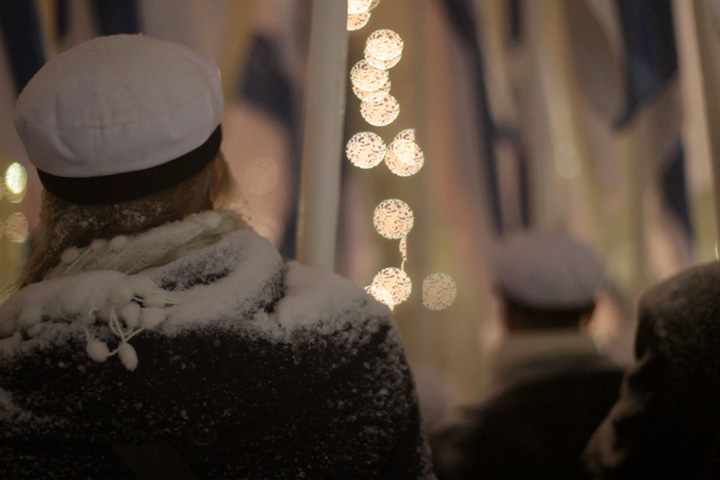| Scene Shifts, in six movements | Jani Ruscica | 2012 | 15:57 min. | |
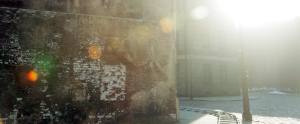 |
Words shape our impressions and form our history. In ‘Scene Shifts, in six movements’ a journey through historical layers of various locations on several continents unfolds. However, it is primarily an intellectual journey. The locations, images, texts and music hold references to a long history of cross-cultural misinterpretations. Jani Ruscica (b.1978) is an artist working with film, video, photography and other media. Ruscica works collaboratively, his interest lies in how one defines one’s location, one’s placement in the world, and how this definition changes – continuously, if necessary – according to personal, cultural, representational or even scientific factors. Ruscicas works explore the intersection between cinema, video art, theatre and performance. His recent exhibitions include 6th Liverpool Biennial, 2010, 5th Momentum Biennial, Moss, Norway 2009, 'Life Forms' Bonniers Konsthall, Stockholm, 2009, ”Tracking Traces...” Kiasma, Helsinki as well as screenings in institutions such as Centre Pompidou, Paris, TATE Modern, London and MoMA, New York. His film Evolutions was awarded the main prize at at the prestigious KunstFilm Biennale in Cologne in 2009, in 2010 Ruscica was awarded the AVEK prize for important achievements in audio visual culture. Ruscica is based in Helsinki and was educated at Chelsea College of Art and Design in London and at the Academy of Fine Arts in Helsinki. |
| Home and Country | Carl Sebastian Lindberg | 2013 | 18:41 min. | |
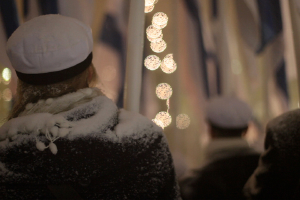 |
Home and Country is based on interviews with the author Ann-Mari Lindberg. The work portrays the major events of the Second World War in Finland through the everyday experiences of the child. It also more generally recounts how these experiences have influeced the values of that generation. Sebastian Lindberg was born in Helsinki in 1978. He graduated from the Finnish Academy of Fine Art in Helsinki in 2008. Since 2003 when he was an exchange student at the École Nationale supérieure des Beux-Arts in Paris he has been working primarily with the moving image. His work has been shown in group- and solo-exhibithions in Finland and abroad, and it has also been broadcasted by Yle (The Finnish broadcasting company). Apart from working as an artist Lindberg has also worked as a freelance journalist focusing on art reviews. http://sebastianlindberg.net |
| Archipelago Science Fiction | Tellervo Kalleinen & Oliver Kochta-Kalleinen | 2012 | 24:55 min. | |
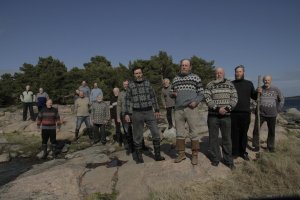 |
The Turku archipelago islands located in the Baltic Sea provide the framework for future scenarios. The islanders themselves perform the four hilarious and sometimes chilling episodes they scripted based on their own fears and hopes. The visions are surprisingly contemporary and universal. Tellervo Kalleinen and Oliver Kochta-Kalleinen are a visual artist duo, based in Helsinki, Finland. Working with video, performance, intervention and events, they constructs slightly twisted situations in which interaction can happen. Most of their works are participatory and are based on creative collaboration. |
| Hate | Sami Van Ingen | 2012 | 12:00 min. | |
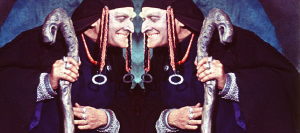 |
In 1959, Soviet film director Aleksandr Ptushko (1900–1973) directed a feature film titled Sampo, which was loosely based on the Finnish national epic Kalevala and which was in part filmed with two cameras simultaneously. In HATE a stereographic image is appropriated from Sampo to form a “happening” between two different perspectives and intended to play with the possibility of exposing the hidden landscape of the mythical Kalevala. Director: Sami van Ingen Production Company: Jinx Ltd. Sami van Ingen is an experimental filmmaker, whose work is distributed by and screened at some of the most central institutions in the experimental film world. Besides his practice as an artist van Ingen also curates and teaches experimental film |
| Rhymä-School Party | Natalia Comandari | 2012 | 08:30 min. | |
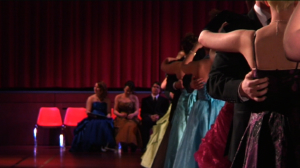 |
Ryhmä-School Party is the first video in a series of events in various contexts and filmed over a period of time. The aim is to document new modern rites and ceremonies. Ryhmä, translated from Finnish means group, category or celebration. In the village of Hämeenkyrö students of the F: E Sillanpää Senior High School held a tradition that has been passed from generation to generation: the third year students leave school to go to college, so students in second year they become the oldest in the whole school. This honor is celebrated with ballroom traditional dances from Finland. It is a rite of passage to adulthood that combines tradition and pop culture as the main ingredients of a contemporary dance. . Natalia Comandari, born in 1983 in El Salvador, is a visual artist who document by filming different groups of young people (or not), who each possess their codes and references a variable in any time. Through these communities, she explores the behaviour of hysterical disposition, culture and leisure to consumption but also the folklore and social codes reversed. With a methodology close to sociologist, she analyzes and led the search for the other research of normal and abnormal. Her films are showed in internationals film festivals around Europe and America. She lives and works between Switzerland and El Salvador. |
| The Bath House | Henna-Riikka Halonen | 2009 | 12:52 min. | |
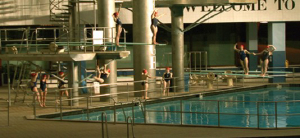 |
The Bath House is a cinematic re-imagination of a 1930s Russian constructivist play written by Vladimir Mayakovsky and directed by Vesevolod Meyerhold. The work is set at the modernist Royal Commonwealth Pool in Edinburgh, Scotland. Henna-Riikka Halonen (born in Finland 1975) graduated with MFA Fine Art from the Goldsmiths College, London in 2006. Henna-Riikka Halonen is interested in social structures and human behavior and often collaborates with people to engage with their working or leisure experiences, highlighting everyday practices, and peripheral positions, as potential sites for resistance to wider social structures. Recording and staging resistance of a cultural alienation usually caused by geographical displacements of a voluntary, involuntary or even forced kind is a core Halonen’s practice. In her work she stages and documents events and collaborate with people, such as evicted inhabitants of the future Olympic site in London, Polish immigrants in Ireland or members of a Diving Club in Edinburgh. Recently she has shown her work in exhibitions in Centre Pompidou, Paris,Gallery Art Claims Impulse, Berlin, Loop Video Art Fair, Barcelona,Grimmuseum, Berlin, Gstaad Film Festival, Switzerland, Incheon International Biennale, Korea and ARTE TV Channel (France/Germany). |
| The Comfort Zone | Mikko Gaestel & Jaako Pallasvuo | 2013 | 3:51 min. | |
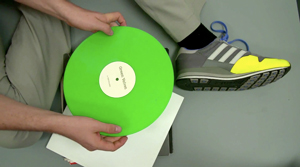 |
The Comfort Zone is a video about human-object relationships. Some objects need taking care of, some objects aim to please. How do different habits of thinking (analytical versus intuitive) manifest themselves when we grasp hold of the physical? Oval Office is a collaborative project by Mikko Gaestel and Jaakko Pallasvuo. Mikko Gaestel *1982 (DE/FI) studied Fine Arts and Experimental Film at University of the Arts Berlin finishing with a »Meisterschüler« degree. His Work has been exhibited in Goethe Institute (New York), Kunstverein Wolfsburg, European Media Art Festival, Kunsthalle Bremerhaven, Deutsches Hygienemuseum (Dresden) and Organhaus (Chongqing), among others. Jaakko Pallasvuo (FI) is an internet-based artist dividing his time between London, Berlin and Helsinki. His work has recently been exhibited at Future Gallery (Berlin), AMOA-Arthouse (Austin), Arcadia Missa (London) and W139 (Amsterdam). |
| Suddenly, Last Summer | Juha Mäki-Jussila | 2013 | 04:17 min. | |
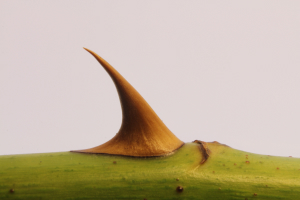 |
Suddenly, Last Summer is an experimental animation based freely on the play of the same title by Tennesee Willams. Some fragments of the original play are restaged frame by frame by new botanical performers. Born in 1967 in Ilmajoki, Finland, and currently resident in Karkkila, Juha Mäki-Jussila's media are video and short film combined with sculptural oddities. He uses various techniques in order to examine and reflect on human behaviour. References to the cinematic history can also be found in Mäki-Jussilas approach. In the very recent works Mäki-Jussila has applied frame by frame technique to create ”movement of illusion”, rather than illusion of movement. He gratuated from the Academy of Fine Arts Helsinki in 1997 and has since participated in several exhbitions and video festivals in Finland and abroad. |
